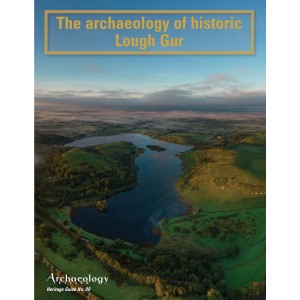The historical details of the early centuries AD in east Limerick, as elsewhere, are an amalgam of pseudo-historical accounts, the narrative of historical record and myth. Tradition states that in the middle of the third century a branch of the Waterford Déisi settled around Lough Gur. Lough Gur is in the centre of the barony of Small County, whose Irish name (In Déis Becc) is a memento of Déisi lordship; the name of the nearby village of Bruff (Brugh na Déise) is also derived from the association with the Déisi. The Déisi colonisation of Wales accounts for some Roman artefacts from around Lough Gur. Excavations at Carraig Aille recovered a Roman bronze coin, toilet implement and stylus; further afield, a late fourth-century Roman silver hoard was found in 1940 at Balline, Knocklong
The Eóganacht political dynasty had superseded the Déisi by the fourth century AD and expanded their territories with a caput or headquarters at Knockainy (Eóganacht Áine). The demise of the Eóghanacht was matched by the rise of the Dál Cais, who emerged as a dominant power in Munster by the late tenth century. Brian Boru, king of the Dál Cais, consolidated his position in Munster, including the fortification of ‘Dún Gair and the Island in Loch Gair’ (Lough Gur) in 1002.
This Heritage Guide describes the site and monuments during the historic periods of Lough Gur’s narrative
Heritage Guides are included free with Archaeology Ireland subscriptions. Or can be purchased vis this website @ €5 each.
| Details | |
| Author | Rose Cleary |
| Publication Data | AUTUMN 2022 |
| Subjects | The archaeology of Historic Lough Gur , Co. Limerick |
Heritage Guide No. 98 The archaeology of Historic Lough Gur , Co. Limerick
- ISBN: ISSN 0790-982X
- Author(s): Rose Cleary
- Availability: In Stock
-
€5.00
Tags: Heritage Guide No. 98 The archaeology of Historic Lough Gur, Co. Limerick

